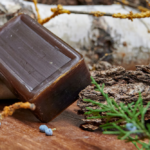Pistachio (in Latin Pistacia vera), which grown in the Near East, Mediterranean Region, and western regions of Asia in the world, is mainly from the Gaziantep region in our country. Again, the total number of provinces where pistachios are grown is 44. These provinces located in our Southeast, Mediterranean, Aegean, and even Central Anatolia Regions. The provinces that have the most say in production are Gaziantep, Kahramanmaraş, Adıyaman, Şanlıurfa, Mardin, Kilis, Diyarbakır and Siirt.
Pistachio cultivation in our country started professionally in 1948 with Ceylanpınar State Farm on 114 decares. Today, this institution has an essential place in pistachio research. Moreover, an area of 43 thousand decares has been allocated for these researches.
Depending on the production regions in our country, there are many varieties of pistachios. The main types are:
Long: Despite its small size, it known worldwide for its taste from the Gaziantep region. It matures later than other varieties. But its efficiency is higher. This type widely used in the food industry. It is the most common variety found in our country.
Red: It mainly grown in the high parts of the Gaziantep region. It preferred because of its early maturation.
Siirt: Siirt pistachio, grown in Siirt and Şanlıurfa, has significant popularity due to its large grains and high crack rate.
Aleppo: This variety, which grows in hot regions, is an input to the nuts and food industry.
Ohadi: Due to its large size, it mostly consumed as nuts. It is a late-maturing variety.
Apart from these types, the pistachio types grown in our country are as follows.
- Keten Gömleği,
- Beyaz Ben,
- Değirmi,
- Çakmak,
- Sultani,
- Vahidi,
- Mümtaz,
- Sefidi
- Hacı Şerif
World Production of Pistachios
According to the data of the International Hard Shell and Dry Fruit Council; As of 2016, the leading country in pistachio production in the world is the USA. The USA has recently increased its production volume by improving production and irrigation techniques. Thus, it became a rival to Iran. With its fluctuating production structure, our country ranks third after these countries in the seasons when the yield is high.
The relatively low price of pistachios originating in Iran and the coarse-grained and cracked nature of pistachios cause Iranian pistachios demanding worldwide. However, the aflatoxin formed during the production caused the importing countries to prevent Iran pistachio import from time to time. In recent years, especially the European Union and the USA have started to take severe measures in this regard.
Pistachio, grown in the People’s Republic of China, is from a different biological family. The fruits of this tree are not suitable for human consumption. In the People’s Republic of China, the production of the plant in question emphasized in recent years. Further, they use this plant for their biodiesel fuel production work.
In the USA, pistachios are grown mainly in the state of California. Pistachio were first brought to this country from Iran in 1848. In the USA, Kirman and Peter type Pistachios are predominantly grown varieties. Furthermore, there are Ibrahimim, Ohadi, Safidi, Shasti, and Vahidi varieties.
In the world pistachio market, the product re-exported on a large scale. In this context, non-producing countries such as Hong Kong, Germany, the Netherlands, and Luxembourg also play an essential role in this market by re-exporting products from third countries.
Exports of Turkish Pistachio Industry
High production costs bring along marketing difficulties against competitor country products. Despite this, our pistachio export amounted to 42 million dollars (2,227 tons) in 2014 (including packaged pistachios). In 2015, our pistachio exports increased by 79% compared to the previous year and reached 75 million US dollars (5,087 tons). When our export markets analyzed on a country basis, it seen that Italy had the largest share with 29%, followed by Germany (18.5%), the USA (6%), and Saudi Arabia (5.5%).
Source: Republic of Turkey Ministry of Economy Export Directorate













